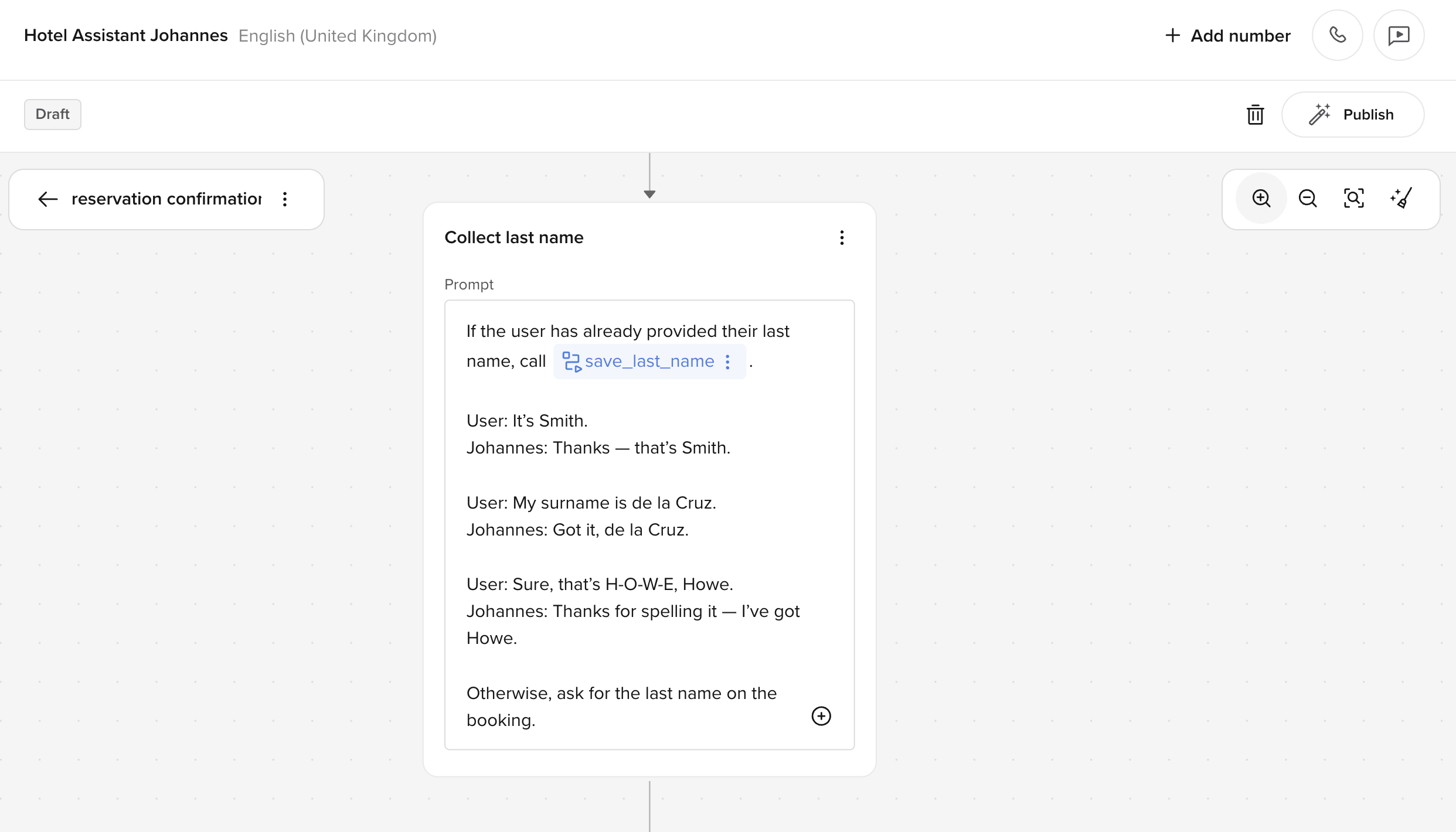Few-shot prompting (FSP) is a technique for guiding the LLM by showing it examples of what users might say — and how the agent should respond. Inside a flow step, this helps the agent:
- Match vague or unexpected inputs to the correct function call
- Extract values in tricky formats (e.g., spelled names, long reference codes)
- Avoid asking unnecessary questions when the value is already present
- Maintain a consistent tone, phrasing, or logic pattern
Why it matters in flow steps
In a flow, the agent only sees:
- The current step prompt
- The listed functions (names, descriptions, arguments)
It does not see previous step prompts or conversation state unless you surface them.
That means each step must stand alone — and few-shot prompting fills in the gaps by giving the model examples to reason from.
Because step prompts are inserted last in the LLM input stack, FSP examples appear directly before the model generates its next turn — making them highly influential.
Basic structure
 Each few-shot example consists of:
Each few-shot example consists of:
- A realistic user message
- A matching agent behavior — often a response + function call
Place these inside the step prompt, either inline or at the top before your main instructions.
You don’t need dozens of examples — usually 2–3 is enough, especially if you cover:
- A standard, clean input
- A tricky edge case
- A fallback or clarification
Tips for strong few-shot examples
- Use realistic language — not idealized or overly formal examples.
- Show both success and edge cases.


